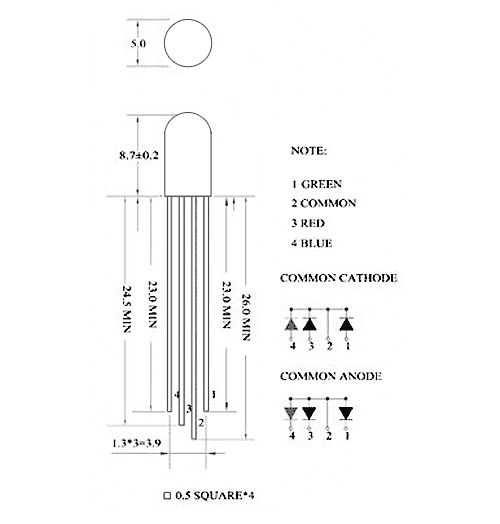I like to go skating every week but I noticed that the my skates weren’t cool enough so I decided it was time for some lights! I installed these lights on my Dad’s skates as a thank-you present for taking care of the pool for us :D. Thanks Dad!

The project is just two RGB LEDs controlled by a ATtiny2313. Very cheap and easy to make with GREAT results!
Please give it a vote for the Microcontroller and I Could Make That contest and favorite!
My project is trying to imitate these.http://shoprollerbrights.com/. What’s the point in buying them if you could make them???
Step 1: Ingredients
Electronics:
- ATtiny2313
- 20 DIP chip holder
- Arduino
- RGB common anode LEDs with appropriate resistors.
- A diode. Really any kind of diode will work. The only purpose it has is to lower the voltage a little bit. The battery pack which is 4 AAA puts out 6 volts. The ATtiny2313 peak voltage is 5.5 so I use a diode that drops the voltage (from the battery pack) .7v just to be safe. That gives about 5.3v which is just under the ATtiny’s max voltage.
- Wires
- Breadboard with jumpers
- Perf board
- 90 degree pin headers
- Female pin headers
- 4x AAA battery. I bought this one from Radioshack and it worked great. Usually I don’t buy from Radioshack but it was cheap enough (2.99$).
- Heat Shrink
Tools:
- Wire strippers/cutters/
- Soldering gun and solder
- Dremel or other device to cut perf board
- Sharpie
- Electrical tape
- Double-sided tape
Last of all you will need the Arduino sketch. You can download that from here.
http://www.mediafire.com/view/hfp3uvum4kr907n/Skating_lights.ino
Step 2: Programming the ATtiny2313 and Schematic
While I’m not going to explain how to do this in this i’ble I made a very detailed i’ble on how to program the chip. Head over to http://www.instructables.com/id/How-to-Program-ATtiny2313-Current-and-Updated/ to see how to program the IC.
Step 3: A little background on the RGB LEDs
For my project I used common anode LEDs. So basically you have to connect the common anode (the longer lead) to 3.3 volts and then to turn on each LED you have to connect the other leads to GND. But I ran into a problem when I was trying to use it with my Arduino. The problem was I need the three RGB pins to be connected to GND, not 5v (which is outputted from an Arduino pin). After reading up on common anode RGB LEDs I figured out that you have to use a technique called current sinking. Now to be honest I have no idea how this works but basically you connect the all the pins to the Arduino with resistors. In order to turn the LEDs on you have to set the Arduino pin to LOW. To turn it off you set the pin to HIGH. Yeah, it’s crazy!
I accidentally made the mistake of solder the common anode to the GND of the board. So most of the pictures will show them soldered to the GND of the board. Instead they should be soldered to the Vcc on the board.
Step 4: Beginning the Perf
Insert the DIP socket into the perf board and push the pins over on the backside so that it is held onto the perf. Also insert the 90 degree pin header in one of the corners.
The pin headers is for the power for the circuit. Solder a wire from the top pin header to the Vcc (of the ATtiny2313). The bottom lead gets soldered to GND of the IC. Check the pinout if you are unsure.
Now remember we are not actually soldering to the ATtiny2313 itself but we are soldering to it’s socket. This is so that we can re-use the IC or reprogram it by just popping it out of the socket. If you soldered it directly to the board then you would have to unsolder the whole thing just to get it off.
Step 5: Preparing the Electronics
- Cut the leads short on the resistors and the LEDs. Make sure you leave a slightly longer lead on the LED so that you know which one is the common anode.
- Cut 6 two inch wires and strip both ends.
- Cut two different colored wires to about 2.5 inches. Strip the ends.
- Melt some solder onto the wires, LED leads, and resistor leads. This will make it a little easier to solder other wires to it.
- Spread apart the leads on the LEDs.
For more detail: RGB LED Skate Light

